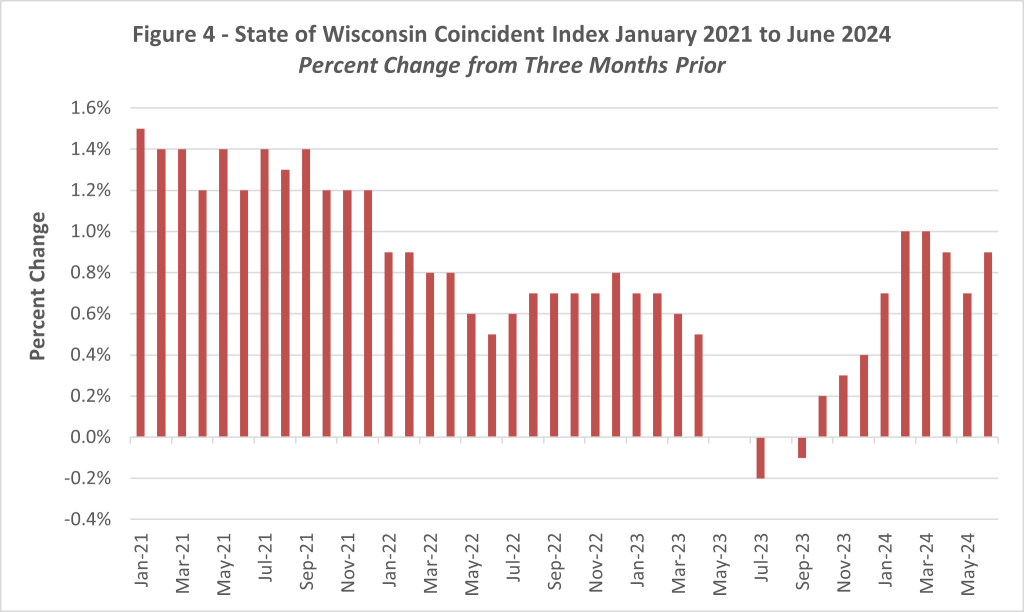(Image Source: Dave Hoefler / Unsplash)
Wisconsin IDEA
Insight • Data • Economics • Analysis
Encouraging Signs from Wisconsin’s Coincident Index
Constructed by the Federal Reserve Bank of Philadelphia, the state coincident index is a composite of four measures that summarizes a state’s economic condition in a single indicator. The economic measures used in constructing the index are: 1) nonfarm payroll employment; 2) average hours worked in manufacturing by production workers; 3) the unemployment rate; and 4) the sum of wage and salary disbursements and proprietors’ income adjusted for inflation [1]. The coincident index provides another means of tracking the direction of a state’s economy and can be used to identify recessions at the state level rather than relying on national economic cycles.
Figure 1. June 2024 State Coincident Index

Wisconsin’s coincident index in June increased 0.9% over the index three months prior, and 2.2% over the last 12 months. Wisconsin was one of 40 states that experienced an increase in June, with its index increasing at a greater rate than its neighboring states (Figure 1). The June increase in Wisconsin’s index partially reflects a declining unemployment rate (Figure 2) and an increase in nonfarm payroll employment (Figure 3) compared to values three months ago. Accordingly, the index is somewhat influenced by the continuing strength of Wisconsin’s job market.
Figure 2. State of Wisconsin Change in Unemployment Rate

Figure 3. State of Wisconsin Change in Nonfarm Employment

June is the ninth consecutive month showing an increase in Wisconsin’s coincident index over three months prior, which contrasts with the period between May 2023 and September 2023 when the state’s index either declined or remained unchanged (Figure 4).
Figure 4. State of Wisconsin Coincident Index, January 2021 to June 2024

This period also reflects five consecutive months where Wisconsin’s coincident index showed a notable divergence from the United States’ index, suggesting that Wisconsin’s economy was somewhat sluggish relative to national trends as measured by the coincident index. Not surprisingly, the declines in Wisconsin’s coincident index during this period were influenced by increasing unemployment rates and minimal or negative changes in nonfarm payroll employment. This period was also part of longer downward trend in hours worked in manufacturing (Figure 5).
Figure 5. State of Wisconsin Average Weekly Hours of Manufacturing Production Employees

While the recent improvements in Wisconsin’s coincident index are encouraging, the July U.S. jobs report showed slowing job creation and a rising unemployment rate that has created concerns about a slowing U.S. economy. Whether or not Wisconsin follows a similar trend is to be determined, but future coincident index values will provide insights on the direction of the state’s economy. These coincident index values are available at the Federal Reserve Bank of Philadelphia’s website.













